Navigating the World of Second Hand Kitesurfing
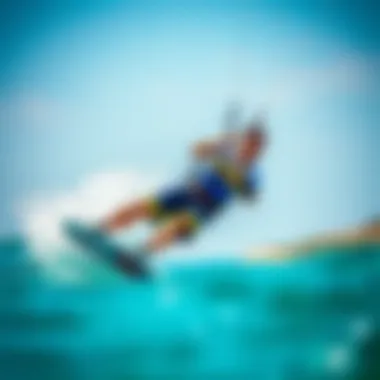
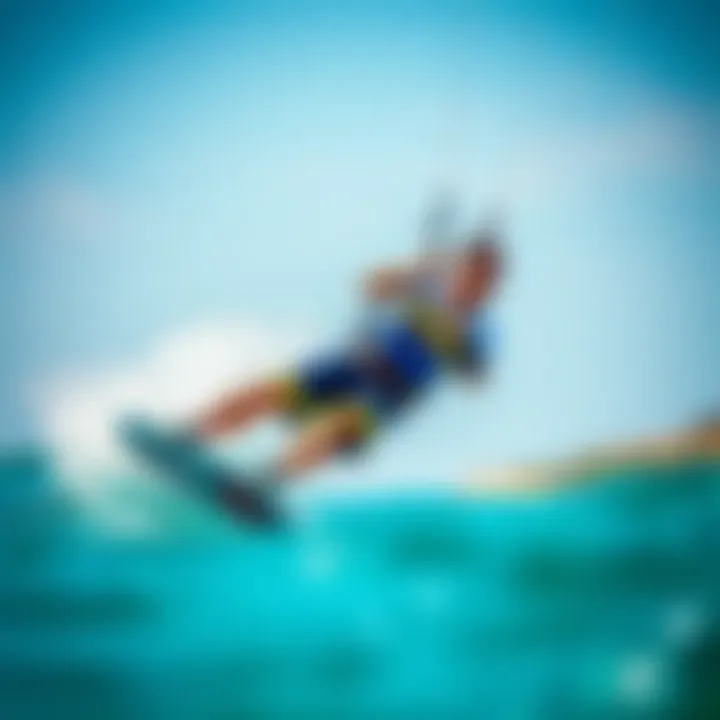
Intro
Kitesurfing is not just an exhilarating water sport; it's a lifestyle choice for many who find solace in the waves and freedom in the wind. However, diving into this world can carry a hefty price tag if you're only looking at brand-new gear. That’s where the charm of second-hand kitesurfing comes into play. Purchasing pre-owned equipment is not just a wallet-friendly option; it also opens doors to a treasure trove of gear that seasoned riders are ready to part with. But let's not kid ourselves—it comes with its own set of challenges.
In this article, we’re here to wade through the nuances of second-hand kitesurfing gear. We’ll dig into how to make smart decisions when buying used equipment while underscoring the environmental impact of these choices. As kitesurfers seek to merge passion with practicality, understanding the ins and outs of selecting equipment can lead to not only better experiences but also a sustainable way to enjoy the sport.
So strap in as we take a detailed look into essential gear, evaluation strategies, and the broader implications of embracing sustainability within this thrilling sport.
Understanding Second Hand Kitesurfing
Understanding the nuances of second hand kitesurfing gear is crucial for kiteboarders who seek both quality and value. As the popularity of kitesurfing grows, so does the market for pre-owned equipment, which can be a goldmine for enthusiasts wanting to get their hands on excellent gear without breaking the bank. The importance of delving into this realm goes beyond just saving a few bucks; it encompasses considerations of sustainability, community, and the thrill of the sport itself. Every kite, board, and harness carries a story, and diving into the second-hand market often leads to unique finds that can enhance one's experience on the water.
Definition and Overview
Second hand kitesurfing gear refers to pre-owned equipment that has been previously used by another kitesurfer. This can include kites, boards, harnesses, and other accessories that are essential for the sport. Such equipment has often been traded, sold, or otherwise passed on as users upgrade or change their interests. There’s a vast array of equipment available, ranging from virtually brand-new items sold at a discount to older models that carry a history.
Understanding this definition is vital as it sets the foundation for recognizing the value and potential downsides of buying second hand. The condition of used gear can vary significantly, influenced by factors such as how often it was used, maintenance, and storage conditions. Thus, buyers need to be savvy and informed, ensuring they invest in gear that meets their needs and safety standards. From novice seekers to seasoned players, knowing what to look for in second hand kitesurfing gear is an essential skill to master.
Why Consider Second Hand Gear?
There are several compelling reasons to consider purchasing second hand kitesurfing gear:
- Affordability: The primary draw for many kiteboarders is the price. Second hand gear often comes at a fraction of the cost of new equipment, which can be particularly appealing for beginners who may not want to invest heavily until they are fully committed to the sport.
- Historical Value: Older models might not just be cheaper but can also present unique characteristics that newer equipment lacks. For example, vintage kites might offer a different riding experience that some kiteboarders find appealing.
- Sustainability: Opting for second hand gear supports eco-friendly practices. By purchasing used equipment, you help to reduce waste and the demand for new production, which can have a significant impact on the environment. It’s a step towards promoting a circular economy, which is increasingly important in today’s environmentally conscious world.
- Building Community: When buying second hand, enthusiasts often engage with fellow kiteboarders, sharing tips, experiences, and recommendations. This interaction fosters a sense of community, enhancing the overall experience of kitesurfing.
- Better Selection for Advanced Riders: Experienced kiteboarders might opt for second hand gear to access specialized equipment that may no longer be manufactured or is difficult to find. It allows them to experiment with different types of gear without incurring the steep costs of new models.
The Benefits of Buying Second Hand Kitesurfing Gear
Embarking on a kitesurfing adventure doesn’t necessarily mean breaking the bank to acquire the latest gear. The practice of buying second hand gear is increasingly popular among kiteboarders for numerous compelling reasons. This section delves into the advantages you gain from opting for pre-owned equipment, emphasizing cost-effectiveness, access to older models, and the opportunity to support sustainable practices in the kitesurfing community.
Cost-Effectiveness
When it comes to engaging in any sport, financial considerations often play a significant role in decision making. Let's be honest—the price of brand new kitesurfing gear can send shivers down the spine of even the most die-hard enthusiasts. By selecting second hand equipment, you can save a substantial amount of money.
For instance, consider that a brand new kite can set you back several thousand dollars, while a used kite in good condition might cost you half or even a third of that price. That’s money you could put towards lessons to perfect your skills or maybe even that dream trip to Cape Town. Selecting second hand doesn't just mean acquiring gear; it means investing in experiences that matter to you.
Benefits of Cost-Effectiveness:
- Saves Money: Greater savings allow for a broader range of experiences.
- Chance to Upgrade: With the money saved, you can upgrade more frequently.
- Accessibility: With lower prices, more individuals can enter the sport, fostering a larger community.
Access to Older Models
The fast-paced world of kitesurfing often leads manufacturers to release newer models every season, leaving older ones in the dust. However, those older models often possess characteristics and features that newer versions lack. For example, some kiteboarders swear by specific designs that were optimal for certain conditions, but those models may no longer be readily available in shops.
Buying second hand offers you the chance to procure these older, sometimes more reliable models. It’s like digging through a treasure chest and finding that gem that perfectly fits your style.
Advantages of Accessing Older Models:
- Design Preferences: Earlier models might suit your riding style better.
- Tried and Tested: Many older models have been thoroughly reviewed and can provide reliable performance.
- Nostalgia: For some kiteboarders, the older equipment represents a joyous chapter in their sporting journey.
Supporting Sustainable Practices
As we become more mindful of our consumption habits, the kitesurfing community is not (and should not) be an exception. By purchasing second hand gear, we combat the environmental impact of producing new equipment. The production process often involves non-renewable resources and can lead to significant waste.
When you choose pre-owned, you are not simply saving a few bucks; you are actively participating in a cycle of sustainability. The practice keeps gear out of landfills and promotes a circular economy where products are reused instead of tossed aside.
Benefits of Supporting Sustainable Practices:
- Reduced Waste: Extending the lifespan of equipment lessens environmental disposal concerns.
- Community Engagement: Involvement in second hand transactions fosters community interaction and local support.
- Awareness: Encouraging sustainable practices paves the way for more eco-conscious innovations in the kitesurfing industry.
Evaluating Second Hand Kitesurfing Equipment
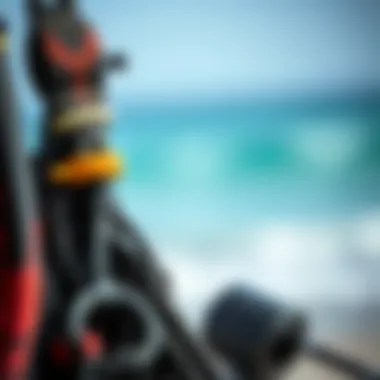
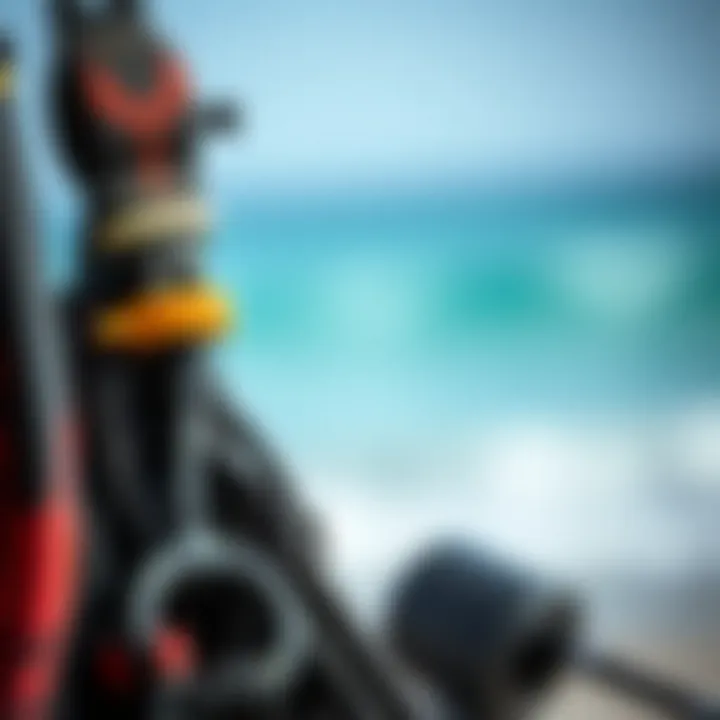
When diving into the vast waters of second hand kitesurfing, the evaluation of equipment isn’t just a quick glance—it’s a necessary part of making informed decisions. Knowing how to gauge your equipment can mean the difference between a thrilling ride on the waves and an unexpected trip to the shop to fix something that went wrong mid-session. Being savvy about what you’re buying not only enhances your experience but also ensures safety and performance. Let’s break down the essential elements that will help you evaluate second hand kitesurfing gear effectively.
Signs of Wear and Tear
Before you even consider laying down your hard-earned cash, it’s crucial to play detective. Start by examining the gear for signs of wear and tear. This can be the silent killer of a good ride. Look for:
- Fraying Lines: Make sure lines aren't fraying or tangling. They are critical for control. Any frays should raise a red flag.
- Dents or Dings in the Board: Small dings can usually be overlooked, but more significant dents can affect performance. Check the edges thoroughly.
- Fading: If the colors are sun-bleached, it could indicate prolonged exposure to elements, which can degrade the material.
Keep an eye on those details; sometimes the smallest signs can indicate larger issues. When it comes to kitesurfing, you want gear that’ll hold up like a sturdy ship, not a fragile toy.
Assessing Performance and Quality
Now that you’ve spotted any outward signs of wear, it’s time to delve deeper into performance and quality. This is where past experience and specific knowledge come into play. To do this effectively:
- Check the Inflation: An adequately inflated kite should hold its shape without sagging. If it looks floppy right out of the bag, it’s best to steer clear.
- Inspect the Seams: Strong stitching is a hallmark of quality gear. Look for any loose or missed stitches, especially around stress points.
- Test Ride if Possible: If the seller allows it, take the gear for a quick spin. Nothing beats firsthand experience to assess how it performs in real-world conditions.
By assessing performance, you get a clearer picture of how the gear might handle the waves, which is ultimately what you're paying for.
Verifying Authenticity
In a market where knock-offs sometimes masquerade as the real deal, authenticity can be a dealbreaker. You want to ensure you’re not investing in something that isn’t what it claims to be. To verify authenticity:
- Check Brand Markings: Original gear will have clear, consistent branding. Look for quality logos and serial numbers that match the manufacturer’s standards.
- Research the Model: Familiarize yourself with the specific model. Often, forums and product reviews can shine a light on what to look for in terms of originality.
- Ask for Proof of Purchase: A previous receipt or proof of purchase helps confirm the item's legitimacy. If a seller is hesitant to provide this, consider it a warning sign.
/ The importance of assessing the authenticity of kitesurfing equipment cannot be overstated. Not only does it protect your investment, but it ensures your safety on the water.
Being attentive to these details when evaluating second hand kitesurfing equipment will vastly improve the chances of making a wise purchase. Don’t get swept away in the excitement of a good deal; take your time and assess properly. By looking for signs of wear, checking performance and quality, and confirming authenticity, you position yourself to enjoy unforgettable sessions on the water with gear that truly delivers.
Sources for Buying Second Hand Kitesurfing Gear
Navigating the world of second-hand kitesurfing gear isn’t just about the equipment itself; it’s also crucial to know where to find that gear. Recognizing diverse sources aids kiteboarders in securing quality equipment at reasonable prices while helping to support sustainable practices. Let’s dive into a few primary sources where you can score a great deal on second-hand kitesurfing gear.
Online Marketplaces
The internet has become a treasure trove for second-hand goods, and kitesurfing gear is no exception. Websites like eBay, Craigslist, and Facebook Marketplace are popular spots where both novice and experienced kiteboarders can buy and sell equipment.
- Advantages: One notable benefit of online marketplaces is the sheer variety of options available. You could find everything from hardly-used kites to well-loved boards. Because these platforms connect buyers directly with sellers, prices can vary widely, giving you a chance to haggle.
- Considerations: However, it is essential to conduct due diligence. When purchasing online, seek out detailed photos, descriptions, and always ask the seller questions about the condition of the gear. Some sellers can inflate prices for what they think is valuable, so knowing a general market range beforehand can be incredibly useful.
Local Shops and Classifieds
Your local surf shop or sporting goods store can be a goldmine for second-hand kitesurfing gear. Sometimes these shops have trade-in programs or bulletin boards where locals can post ads.
- Advantages: Purchasing from local shops allows you to inspect the gear firsthand. This way, you can check for any signs of wear or damage. It’s a more personal interaction than online transactions and can lead to building relationships within the kitesurfing community.
- Considerations: Keep an eye on local classifieds, whether in print or online spaces like Craigslist. You might stumble upon a gem from someone nearby looking to sell quickly. However, like any purchase, do not hesitate to negotiate.
Community Forums and Groups
Tapping into community forums, such as those on Reddit or specialized kitesurfing websites, can be another vital source for finding second-hand gear. Groups across Facebook dedicated to kitesurfing can also be quite effective.
- Advantages: Engaging in these forums doesn’t just provide potential second-hand opportunities, but these spaces also foster networking among kiteboarders. Many experienced members share insider tips and information about what to look for when buying used gear.
- Considerations: Be sure to read reviews or ask for feedback about any deals being presented. Trust is key in community settings, and sometimes locations may have specific reputations.
Negotiating Second Hand Purchases
When it comes to diving into the realm of second hand kitesurfing gear, negotiation is a crucial skill that can significantly impact both your bank account and your overall kitesurfing experience. While some may view it as merely haggling over prices, effective negotiation extends beyond mere dollars and cents; it's about understanding value, building rapport, and securing the best deal possible.
Understanding Market Value
Before you even approach a seller, it’s essential to wrap your head around the concept of market value. Market value represents what buyers are willing to pay for specific items in a given condition, and several factors influence this value:
- Brand Reputation: Popular brands like North or Cabrinha often retain their value better than lesser-known manufacturers. Buyers expect to pay a premium for a well-regarded name.
- Condition of the Gear: Scratches, faded colors, or frayed lines can exponentially drop the value of a kite or a board. A well-maintained item commands a better price and is likely to last longer.
- Age of the Product: Gear that’s only a year or two old is generally more desirable and thus more expensive, especially if it hasn't seen much use. Older models may perform well, but they might not sell for half the price they once did.
- Market Trends: Trends in kitesurfing, such as the rise of newer, more efficient designs, can make older models less appealing. Keep an ear to the ground on what’s hot and what’s not in the kitesurfing world.
Acquiring this knowledge empowers you to gauge price ranges effectively, making you a savvier consumer. It’s not uncommon for sellers to either overestimate their gear or undervalue it due to quick sales. Therefore, knowing the market value can set the foundation for a fair negotiation.
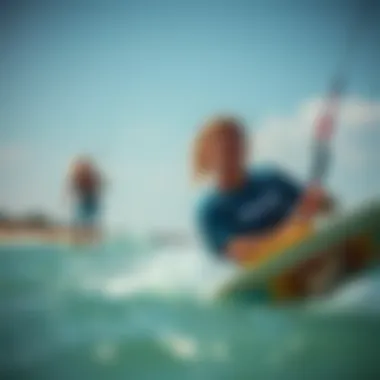
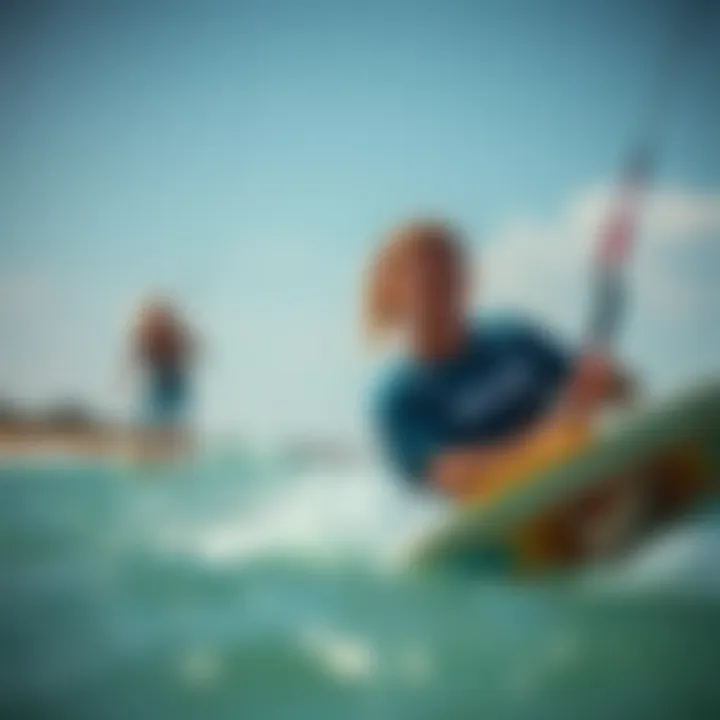
Tips for Bargaining
Bargaining is often seen as an art form and can feel a bit daunting to those unfamiliar with it. However, if you approach it with the right mindset and strategy, it can be both enjoyable and successful. Here are some tips to keep in mind:
- Do Your Homework: Before starting any conversation, arm yourself with research about the gear in question. Familiarize yourself with the average price for similar items. Sites like eBay or Craigslist can provide insight into ongoing market prices.
- Build a Rapport: Sometimes, just treating sellers like people can work wonders. A friendly chat about your shared passion for kitesurfing can create a mutual connection, making them more inclined to offer a fair deal.
- Start Low but Reasonable: The classic negotiation tactic—starting lower than your max price—can give you room to negotiate. However, don’t go ridiculously low; this can offend sellers or lead to them shutting down your offers.
- Be Prepared to Walk Away: Having the ability to walk away can often lead to better offers. If a seller knows you’re not desperate, they may just lower their price to make a sale.
- Address Concerns Directly: If you notice signs of wear that affect the performance, bring them up. This gives you solid ground for negotiating a lower price without coming off as rude.
- Offer to Meet in the Middle: If a seller’s price is firm, sometimes meeting halfway can be a win-win situation. This shows you’re reasonable, while still valuing the item appropriately.
"Negotiation is the art of letting someone else have your way."
Negotiating for second hand kitesurfing gear is more than just about saving a few bucks; it’s an integral part of the thrill of the hunt. With a solid understanding of market values and thoughtful strategies in your toolkit, you’ll engage in negotiations that are fair, effective, and rewarding.
Caring for Second Hand Kitesurfing Gear
Caring for second hand kitesurfing gear is a crucial aspect that can significantly impact your experience on the water. Just because the gear has a history doesn't mean it isn’t capable of helping you catch the perfect wave or ride the ideal breeze. If you treat your equipment well, it can yield plenty of enjoyment and last longer than you might expect. Therefore, understanding maintenance and storage practices is vital. These factors can ultimately enhance performance and prolong the life of your kitesurfing equipment while ensuring it remains environmentally friendly.
Maintenance Best Practices
Maintaining second-hand kitesurfing gear can seem daunting at first, especially if you're new to the sport or the equipment itself. However, incorporating a few best practices into your routine can stave off major issues.
- Regular Cleaning: After every session, take a moment to rinse your board and kite with fresh water to remove sand, salt, and debris. This quick task prevents corrosion and aids in keeping your gear in tip-top shape. It's akin to washing your car—though it might feel tedious, it's worth it in the long haul.
- Inspect for Damage: Before heading out, visually inspect your gear for any signs of wear or leaks. Look for fraying lines on the kite or dings on the board. The earlier you catch a problem, the easier it is to fix, avoiding a potentially costly mistake down the road.
- Line Care: Lines are crucial for control and handling. From time to time, check for knots, tangles, or signs of wear. Replacing them as soon as you notice issues can keep you safe and in control. Think of this as changing a tire before heading on a long road trip—better safe than sorry!
- Proper Setup: Each kitesurfing session should start with appropriately setting up your gear. Make sure your lines are untangled and correctly threaded. An incorrectly set-up kite can lead to performance problems and might even become dangerous.
- Professional Servicing: If you are unsure about the maintenance needs of your gear or spot a significant issue, don’t hesitate to consult a professional. Sometimes, it’s best to leave complex repairs to those with the know-how. Investing in a service can save you headaches later.
"A stitch in time saves nine."
This little saying highlights the importance of proactive maintenance. Taking small steps now can save you from bigger headaches in the future.
Storage Guidelines
Proper storage of second-hand kitesurfing gear can also extend its life and maintain performance. The right storage environment ensures your equipment stays in prime condition between sessions. Here are some effective tips:
- Store Indoors: If possible, keep your gear indoors out of direct sunlight. UV rays can wreak havoc on your kite material, leading to premature degradation.
- Avoid Humidity: Damp environments can cause mold or mildew, particularly on wetsuits and kites. Ensure your storage space is dry, well-ventilated, and temperature-controlled if necessary.
- Use Gear Bags: Invest in quality gear bags or cases to protect equipment from scratches or bumps during transport. This simple step guards against damage that can happen during transport or when stacking gear.
- Deflate Kites: Before storing kites, be sure to deflate them properly. This prevents the material from stretching and losing shape while not in use.
- Organize: Keep all your kitesurfing gear organized in one designated space. This makes it easier to find items when prepping for a session, ensuring you don't forget crucial gear.
By implementing these care and storage practices, you'll not only make the most of your second-hand kitesurfing experience but also contribute positively to the longevity of your gear. After all, well-cared-for equipment is likely to deliver memorable days on the water.
For more insights on improving your kitesurfing skills and equipment, check out Kitesurfing Through the Seasons and Kitesurfing Maintenance Techniques.
By embracing these principles, you enhance not only your own experience but also contribute to a responsible and sustainable approach to a beloved sport.
Challenges of Second Hand Kitesurfing Equipment
Navigating the waters of second hand kitesurfing equipment brings its own set of challenges. While many enthusiasts relish in the prospect of finding good deals, it’s crucial to be aware of potential pitfalls. The second-hand market, like the ocean, can be unpredictable, requiring both caution and keen insight from buyers.
Limited Warranty and Support
When you opt for second hand gear, one major hurdle is the often limited warranty and support. Unlike brand new products that frequently come with extensive warranties and customer service options, pre-owned equipment may lack these assurances. Many brands only offer warranties to the original buyer, leaving subsequent owners in a lurch if something goes wrong.
Imagine you just snagged a sweet deal on a used kite, first-time out it decides to flap like a duck instead of soaring with grace; without warranty, you’ve hit a dead end. Not having manufacturer support means repairs might come out of your own pocket, or worse, you may have to turn a blind eye to issues that could severely affect your performance on the water.
It's wise to research the specific warranty policies tied to the equipment you're considering. Some manufacturers provide transferable warranties while others do not. Asking the seller about the original purchase date and warranty coverage is always a good move. Also, registering the purchase with the manufacturer as soon as you seal the deal can sometimes unlock some options for support.
Compatibility Issues
Another key hurdle is compatibility. In the world of kitesurfing, gear interacts deeply; kites, boards, and bars all need to be compatible for optimal performance. When buying second hand, it’s possible to end up with mismatched equipment that just doesn’t gel.
For instance, a high-performance kite one might score at a bargain could be tailored for a specific board type. If your current board doesn’t align with the kite’s size and design, what you thought was a steal may just end up being a headache. Buyers should have a good understanding of their current gear and how new acquisitions would fit into the mix.
Additionally, different brands often use distinct systems and setups. For example, not all kite lines and control bars are interchangeable. Compatibility doesn’t just stop at equipment models; it extends to the rider too. Considering one's weight, skill level, and riding style is paramount when piecing together a second-hand kit.
In sum, while the allure of second hand gear can be strong, it’s vital to tread carefully. Evaluate warranties attentively, and ensure that compatibility is taken into account before making a purchase.
"The thrill of kitesurfing with pre-owned gear can be exhilarating, but being informed makes for a much smoother ride across the swell."
For further reading on warranties and equipment compatibility, check out resources like British Kitesports or online forums on Reddit, where fellow kiteboarding enthusiasts often share their experiences and recommendations.
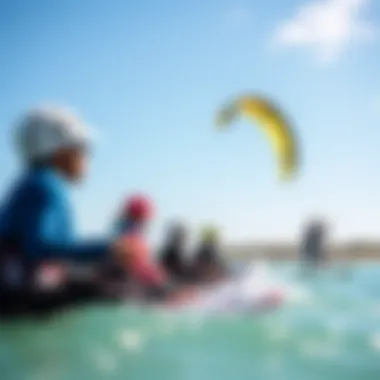
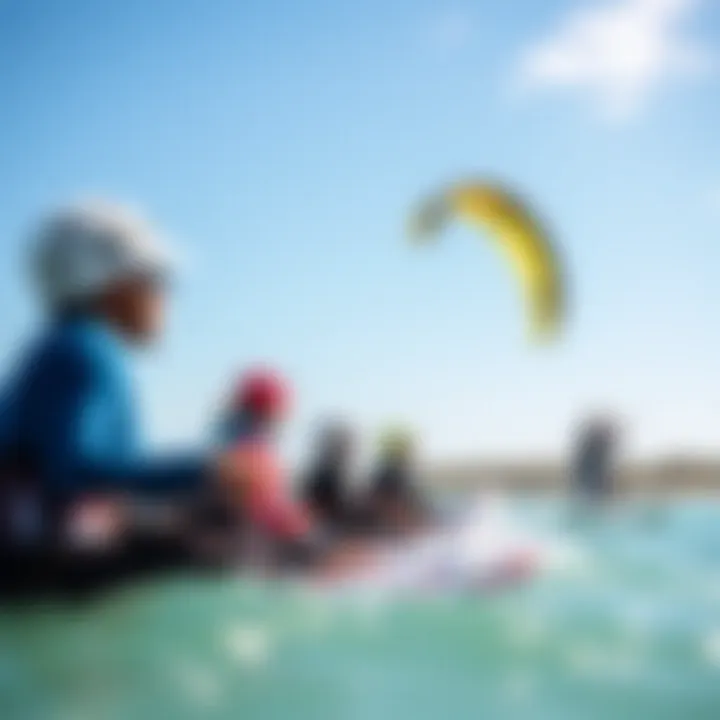
Sustainability in Kitesurfing
Sustainability in kitesurfing has become a hot topic as the sport grows in popularity. With more people hitting the waves, the environmental impact of gear production is coming under scrutiny. Unchecked consumption can lead to a hefty carbon footprint, so understanding how to navigate this challenge is crucial for both the planet and our sports community. It's not just about having the latest gear; it’s about ensuring that we enjoy kitesurfing without leaving a trail of destruction behind us.
This section explores the environmental ramifications of gear production and assesses how promoting a circular economy can contribute to a more sustainable kiting culture.
Environmental Impact of Gear Production
The production of kitesurfing gear isn’t as innocent as it may seem. From the extraction of raw materials to manufacturing processes, environmentally harmful practices can infiltrate every stage. For instance, many kites and boards are made from synthetic materials that derive from petroleum products. This not only causes pollution during production but also means that the equipment will take centuries to decompose if it ends up in a landfill.
Moreover, when factories ramp up production to meet soaring demand, emissions of greenhouse gases can skyrocket, contributing to climate change. Consider these points:
- Water Usage: Manufacturing involves significant water consumption, impacting local ecosystems.
- Chemical Pollution: The fumes from production can harm both workers and the environment.
- Transport Emissions: Shipping gear around the world adds to fossil fuel use, increasing your kitesurfing carbon footprint.
Recognizing these issues is the first step toward being a more responsible kiteboarder. When making a purchase, ask yourself what steps the manufacturer takes to mitigate these impacts.
Promoting a Circular Economy
A circular economy is a model that encourages extending the life cycle of products instead of following the traditional linear approach, which focuses on "take, make, dispose.” In kitesurfing, this can manifest in several ways that contribute to sustainability:
- Buy Second-Hand: Purchasing pre-owned gear reduces demand for new production, which is crucial for lowering environmental impact. It’s an excellent way to score high-quality equipment at lower prices while being eco-friendly.
- Repair Instead of Replace: Many kitesurfing products can be repaired rather than thrown away. A simple patch can extend the life of a kite or board, drastically lowering the need for new products.
- Recycle Materials: When you finally hang up your kite, seek out programs that recycle materials, ensuring they don’t just end up in a landfill.
"A shift from ownership to usage will mark the next evolution in sustainable kitesurfing, promoting a lifestyle that respects both the ocean and the gear we cherish."
Embracing a circular economy not only saves resources but also fosters community and strengthens relationships among kiteboarders. By sharing, trading, or even handing down used gear, each of us can play a part.
Each action, whether small or substantial, contributes to a healthier planet and more enjoyable experiences on the water. The kitesurfing community has the potential to lead the charge toward a greener future, proving that enjoyment doesn’t have to come at the cost of our environment. In the end, it’s about riding the waves while leaving the lightest possible footprint.
The Community Aspect of Second Hand Kitesurfing
In the world of kitesurfing, it's not just about the thrill of riding the waves; it's also about the connections formed within the community. The community aspect of second-hand kitesurfing gear is paramount to enriching the kiteboarding experience. Here, enthusiasts not only share their love of the sport but also foster relationships built on trust, shared knowledge, and environmentally responsible practices.
One of the key elements is that participating in this community allows kiteboarders to find like-minded individuals. These connections can lead to mentoring relationships and even lifelong friendships. Sharing gear not only helps reduce costs but creates opportunities for learning from fellow kiteboarders. When someone buys or sells gear, it serves as an opportunity to connect, whether it's through casual conversation or deeper discussions about the best spots to catch the wind.
Moreover, engaging with the second-hand market encourages local economies. This interaction often extends beyond the mere transaction, offering a way for individuals to contribute positively toward local shops and organizations, particularly in areas where kitesurfing is popular. It’s a way of supporting the community while benefitting from the expertise of seasoned kiteboarders.
“What goes around comes around.” This old saying rings true in kitesurfing communities, especially when it comes to gear exchanges and interactions among peers.
Building Relationships through Gear Exchanges
Gear exchanges serve as the backbone of community interactions within the kitesurfing arena. They provide a structured way for kiteboarders to swap equipment, share experiences, and establish bonds. When someone sells their former kite, they often share stories attached to that piece of equipment—where they rode it, how it performed, and tips for use.
This sharing makes the whole process richer and more personal. Trust grows when sellers and buyers come together to discuss advantages and limitations of their gear. This type of communal exchange often leads to lifelong friendships, allowing individuals to grow beyond mere acquaintances into a close-knit group.
In addition, taking part in group meet-ups or community events can forge even stronger ties. It's an opportunity to connect face-to-face, trade stories, and perhaps even demo gear before making a purchase.
Sharing Knowledge and Experience
Knowledge sharing is a considerable benefit intrinsic to the second-hand kitesurfing community. Experienced kiteboarders boast extensive expertise about various setups, techniques, and safety measures. By allowing others to learn from their journeys, they enhance the safety and enjoyment level of all participants.
For novice kiteboarders entering the scene, this knowledge is invaluable. Beyond gear recommendations, it's about sharing tactics on how to navigate challenging conditions or make the most out of specific gear types. Engaging with this informative dialogue transforms the experience of kitesurfing from a solo venture into a collective adventure.
Furthermore, platforms like Reddit or community forums on Facebook allow for broader exchanges of knowledge. These online spaces become a treasure trove of tips, troubleshooting advice, and even tutorial videos. It’s a wellspring for insight that both novice and experienced kiteboarders can tap into.
In summary, the community aspect of second hand kitesurfing is not simply about transactions. It’s a vibrant network where relationships are built, knowledge is freely exchanged, and sustainable practices are promoted. By actively participating in this community, kiteboarders enhance their experience while contributing positively to the sport and its culture.
Finale
In the context of second hand kitesurfing, the conclusion serves as a critical point of reflection on the various themes discussed throughout the article. Understanding the future of second-hand kitesurfing gear not only highlights the potential benefits but also emphasizes the importance of being mindful in our purchasing habits. The ability to buy pre-owned equipment not just saves money, but opens up possibilities for those looking to participate in the sport without the hefty price tag that can often accompany new gear.
The Future of Second Hand Kitesurfing
The landscape of kitesurfing gear is shifting, and with it comes a burgeoning market for second-hand equipment. As more people become aware of environmental concerns, the shift towards sustainable practices is translating into kitesurfing. Here are a few considerations regarding the future of buying second-hand gear:
- Customization and Upgrades: With a rise in creativity among kiteboarders, many are choosing to personalize their gear. Individuals often view older models as a canvas for modification. Whether it's to enhance performance or simply to reflect one’s unique style, customizing second hand gear has become popular.
- Community Growth: The community aspect cannot be overstated. Kitesurfing groups are increasingly sharing knowledge and tools for safely modifying equipment, which fosters collaboration and camaraderie. Online forums, like those found on reddit.com, can be invaluable resources for connecting with seasoned kitesurfers who can offer guidance on finding the right gear.
- Innovation in Resale Platforms: There’s no denying that online marketplaces are evolving. Platforms like eBay, Facebook Marketplace, and specialized sites for kitesurfing gear enable more robust communication between buyers and sellers.
- Focus on Eco-Friendliness: As sustainability becomes a buzzword across various industries, kitesurfing is no exception. Encouraging events that bring second-hand kitesurfing gear into the spotlight is crucial. These events not only promote environmental awareness but also build community spirit.
In summary, the future of second hand kitesurfing looks bright, driven by the intertwining trends of sustainability and community engagement. It's important now more than ever for kitesurfers to be engaged participants in the lifecycle of their equipment—sharing, selling, and caring for gear in a way that aligns with eco-conscious practices. As this landscape evolves, it fosters a deeper bond between enthusiasts and the environment, shaping the sport for future generations.















